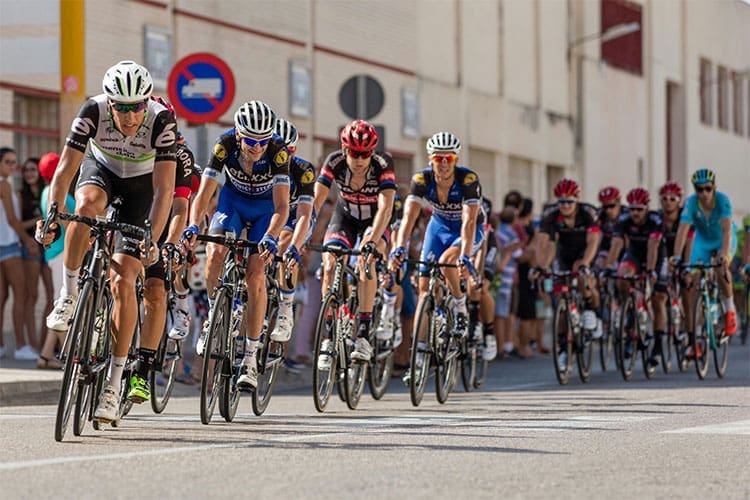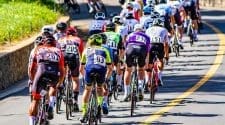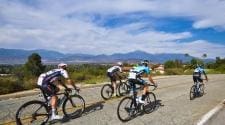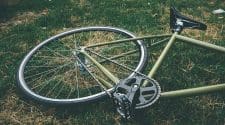Planning a big ride? Congratulations are definitely in order. Most cyclists stick to short, local routes. In fact, about 40% of all trips in the U.S. are under 2 miles.
But some dream bigger, chasing epic challenges like the Race Across America (RAAM). This annual ultra-distance event covers roughly 3,000 miles, stretching from Oceanside, California, all the way to Annapolis, Maryland. It’s one of the hardest endurance challenges on the planet.
If you’re gearing up for a long-distance cycling event like the RAAM, endurance is your best friend. After all, you don’t just want to survive the miles ahead but feel incredibly strong at the finish line.
Here’s how you can build endurance and go the distance on your bicycle while enjoying every mile of the journey.
#1 Train in Zone 2
To ride long distances, you need to improve your body’s engine for sustained efforts. This is the goal of Zone 2 training.
Physiologically, your training zones relate directly to your Functional Threshold Power, or FTP. That is, the highest effort level you could theoretically maintain for an hour. Specifically, Zone 2 efforts fall within the range of 55% to 75% of your FTP.
Zone 2 targets the tiny powerhouses within your cells, known as mitochondria. Your body gets much better at converting fat into usable energy when you train at moderate intensity.
This is crucial for long rides because it conserves your limited stores of glycogen, which are your primary source of energy. Utilizing fat efficiently prevents you from running out of fuel too soon. Over time, this consistent, low-intensity work enhances your overall metabolic flexibility.
Aim for Zone 2 bicycle rides two or three times every week. These sessions should last between 20 and 90 minutes, and longer as your event approaches. In this Zone, the heart rate must be between 67% and 82%. Use a heart rate monitor to know if you’re in that zone.
#2 Mix in Interval Training Sessions
Long, slow miles are great for building stamina. But you also need to improve your speed.
Short, intense periods followed by lower-intensity rest are the fastest, most time-efficient way to raise your overall performance ceiling. Intervals enhance your VO2 max, which measures the maximum amount of oxygen used. They also improve muscle endurance and burn fat, which increases overall stamina.
A great, time-efficient method is the 4×4 interval session. This requires only 16 minutes of hard effort, twice a week. Or, you might use short “Miracle Intervals” for quick gains. You could sprint all-out for 30 seconds, then recover easily for 4 minutes.
Safety, though, should always come first. Avoid busy roads when you do interval training. UCSF research shows bicycle injuries doubled each year between 2017 and 2022. According to the Loewy Law Firm, most accidents result from drivers failing to see or yield to cyclists. Consequently, there is a considerable likelihood of entitlement to compensation in such cases.
Some common at-fault bicycle accident injuries include traumatic brain injuries, fractures, sprains, joint injuries, and skin abrasions. Pick a quiet stretch of road or a cycling track, so you can build endurance and speed while staying out of harm’s way.
#3 Don’t Ignore Nutrition and Hydration
Running out of fuel mid-ride is what cyclists call bonking. Your body only stores about 2,000 carbohydrate calories. These valuable stores are usually gone after 90 minutes of hard work. Consistent fueling and hydration are absolutely required to avoid bonking.
Eat 200 to 300 carbs 30 to 60 minutes before you start. Oatmeal or a banana with nut butter on toast works great. During the ride, fuel early and frequently.
For rides longer than three hours, aim for more calories. Consume 60 to 90 grams of carbohydrates every hour. This target equals roughly 240 to 360 calories per hour. Spread this intake out, eating something every 15 to 30 minutes.
Hydration is just as important. Aim for 20 to 30 ounces of fluid every hour. That is approximately one to one-and-a-half standard bottles every hour. Do not skip electrolytes, especially if you sweat heavily. Sodium helps replace lost minerals and maintains body function.
Like your muscles, your digestive system requires training. If you plan on consuming 90 grams of carbs per hour during an event, you must practice that often. That way, your gut can adapt and efficiently absorb the massive fuel load.
Gearing Up for the Challenge
Endurance is built slowly and deliberately, relying on the cumulative effect of smart choices. Each long ride, each interval session, and every healthy meal adds up to create a stronger, more resilient rider.
The key is consistency, however. Show up week after week, even when progress feels small. Along the way, you’ll learn how to fuel your body, pace yourself, and stay comfortable on the bike. When race day arrives, you’ll have the stamina to finish strong and the joy and confidence to truly savor every moment of the ride.
No products found.

















